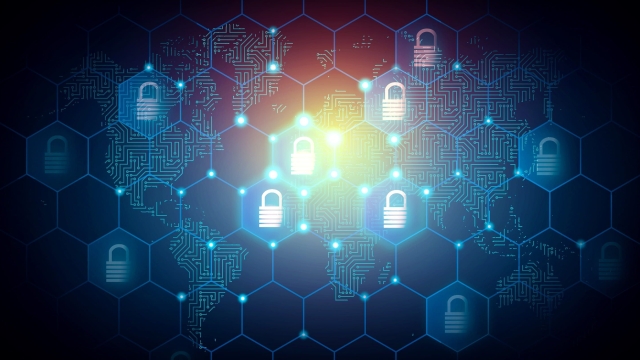
In today’s digital age, where our lives are increasingly intertwined with technology, the need for robust cyber security measures has never been more crucial. With cyber criminals constantly devising new ways to infiltrate and exploit vulnerable systems, it is imperative that individuals and organizations equip themselves with the necessary tools and knowledge to protect against these threats. This is where Cyber Essentials comes into play – a comprehensive framework that sets out five fundamental security controls to mitigate common cyber risks. By adhering to these controls, organizations can lay a solid foundation for their cyber security defenses, safeguarding sensitive data, and ensuring business continuity. In this definitive guide, we will delve into the world of Cyber Essentials, exploring its core principles, benefits, and steps to implementation, ultimately unlocking the potential of cyber security for individuals and businesses alike. So, let’s embark on this enlightening journey and discover how Cyber Essentials can help fortify your digital ecosystem against the ever-evolving landscape of cyber threats.
1. What is Cyber Essentials?
Cyber Essentials is a comprehensive framework designed to enhance cyber security measures and protect against common online threats. It provides organizations with a set of foundational security controls and best practices, helping them establish a strong defense against potential cyber attacks.
The Cyber Essentials framework emphasizes five key security controls, namely:
Cyber Essentials
Secure Configuration: This control focuses on ensuring that computer systems and software are properly configured to defend against known vulnerabilities and reduce the risk of unauthorized access.
Boundary Firewalls and Internet Gateways: Implementing this control helps organizations protect their internal networks by establishing secure boundaries between their systems and the external environment.
Access Control and Administrative Privileges: Proper access controls are crucial to limiting the exposure of sensitive information and preventing unauthorized individuals from gaining access to critical systems.
Patch Management: Regularly applying software updates and patches is essential for addressing known security vulnerabilities and safeguarding against potential exploits.
Malware Protection: Having reliable anti-malware software in place helps organizations detect and prevent various types of malicious software, such as viruses, ransomware, and spyware.
By implementing these controls, organizations can significantly reduce the risk of common cyber incidents and demonstrate their commitment to maintaining robust cyber security practices.
The Cyber Essentials certification validates an organization’s compliance with the framework, providing a recognized standard that demonstrates their dedication to cyber security. This certification can bolster trust with clients, partners, and stakeholders, while also potentially opening doors for new business opportunities.
In the next sections, we will dive deeper into the specific requirements and benefits of Cyber Essentials, highlighting the steps organizations can take to unlock a higher level of cyber security.
2. Benefits of Implementing Cyber Essentials
Enhanced Security Protection: Implementing Cyber Essentials provides enhanced security protection for your organization. By following the guidelines and best practices outlined in the Cyber Essentials framework, you can significantly reduce the risk of cyber threats and attacks. With robust security measures in place, you can safeguard your sensitive data, intellectual property, and customer information from unauthorized access or breaches.
Improved Business Credibility: Cyber Essentials certification demonstrates your commitment to maintaining a high level of cybersecurity. It showcases your dedication to protecting your organization and its stakeholders from potential cyber risks. By implementing Cyber Essentials, you can enhance your business credibility and build trust with your clients, partners, and customers. This can give you a competitive edge in the market and attract more business opportunities.
Cost-Effective Security Measures: Cyber Essentials offers a cost-effective approach to cybersecurity. The framework focuses on essential security controls that are practical and achievable for organizations of all sizes. By implementing these controls, you can establish a strong baseline of security without incurring significant costs. This allows you to allocate your resources effectively and prioritize other critical areas of your business.
Remember, Cyber Essentials serves as a foundation for a robust cybersecurity framework. It helps organizations of all sizes to establish fundamental security practices, minimize vulnerabilities, and protect against common cyber threats. By implementing Cyber Essentials, you can enjoy these benefits and strengthen your overall cybersecurity posture.
3. Steps to Achieve Cyber Essentials Certification
Understanding the Requirements: To begin the journey towards Cyber Essentials certification, it is crucial to familiarize yourself with the requirements outlined in the Cyber Essentials scheme. This framework provides a clear set of guidelines for safeguarding your digital assets. Take the time to thoroughly review the technical controls and best practices necessary to meet the certification criteria.
Implementing the Necessary Controls: Once you have a comprehensive understanding of the requirements, it is time to implement the necessary controls within your organization. This may involve strengthening network security, securing user access, protecting against malware and viruses, and regularly updating software and systems. By following the prescribed measures, you can establish a robust cybersecurity foundation for your business.
Conducting a Self-Assessment and Seeking Certification: After implementing the required controls, the next step is to conduct a self-assessment to evaluate your organization’s compliance with the Cyber Essentials scheme. This internal review will help identify any gaps or areas that need improvement. Following the self-assessment, you can proceed to seek certification by engaging with a Cyber Essentials certification body. Their experts will assess your organization’s cybersecurity measures and determine if you meet the necessary standards for certification.
By following these steps diligently, you can demonstrate your commitment to cybersecurity and unlock the many benefits that Cyber Essentials certification brings to your organization.

